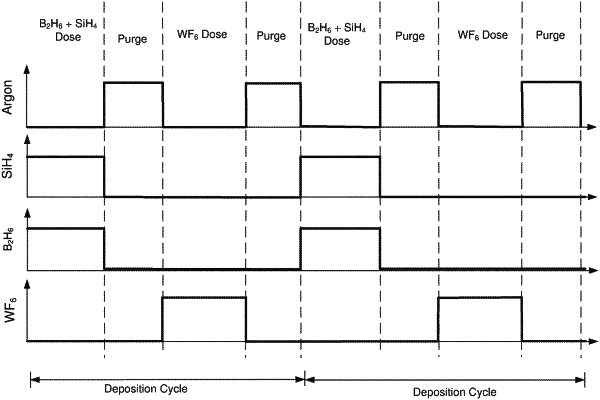| CPC C23C 16/45527 (2013.01) [C23C 16/4402 (2013.01); C23C 16/52 (2013.01)] | 21 Claims |

|
1. A method comprising:
providing a substrate including a feature in a chamber;
depositing a tungsten nucleation layer in the feature by performing one or more cycles of an atomic layer deposition (ALD) process, where each cycle comprises:
flowing one or more boron-containing reducing agent doses in the chamber,
flowing one or more silicon-containing reducing agent doses in the chamber, wherein the one or more boron-containing reducing agent doses and the one or more silicon-containing reducing agent doses are sequential reactant doses, and
after flowing the one or more boron-containing reducing agent doses and one or more silicon-containing reducing agent doses in the chamber, flowing one or more tungsten-containing precursor pulses in the chamber,
wherein during the deposition of the tungsten nucleation layer, the substrate temperature is low enough to suppress decomposition of the boron-containing reducing agent.
|